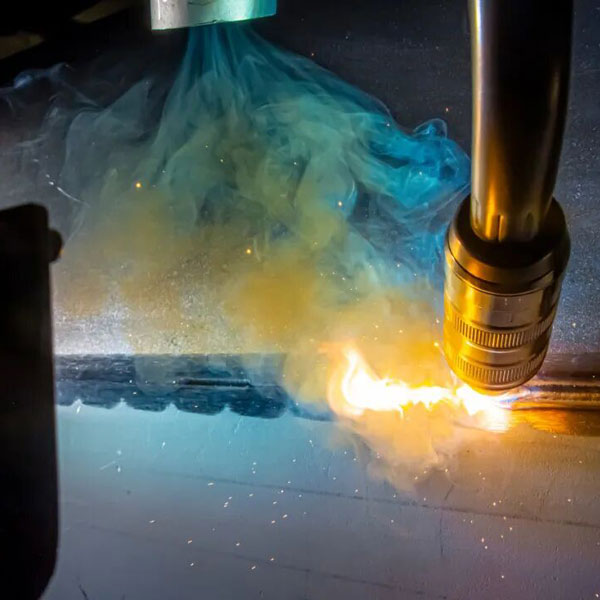LaserHybrid Welding: Unlocking the Future of High-Efficiency Metal Joining
For decades, laser welding and MIG/MAG welding have been the cornerstones of modern fabrication. But what happens when you combine the precision of a laser with the adaptability of an electric arc? The answer is LaserHybrid welding—a revolutionary process that merges two mature technologies into one powerful system, setting new standards for efficiency, quality, and versatility in industrial joining.
What Is LaserHybrid Welding?
LaserHybrid welding, also known as laser arc hybrid welding, integrates a focused laser beam with a MIG/MAG arc, both acting simultaneously on the same weld pool. This synergy combines the deep penetration of laser welding with the excellent gap-bridging ability of arc welding, resulting in a process that is both robust and efficient.
Thanks to continuous innovations in welding technology, LaserHybrid systems have proven to significantly improve productivity in mass production lines. Today, they are widely used in automotive manufacturing, shipbuilding, heavy machinery, and equipment fabrication, demonstrating exceptional performance and economic value.

LaserHybrid welding head combining laser beam and MIG arc
The Science Behind the Process
At its core, LaserHybrid welding merges the high-energy density of a laser beam with the metal transfer dynamics of MIG/MAG welding. The laser’s heat source creates a keyhole effect, while the electric arc stabilizes the molten pool and improves filler metal deposition.
When paired with advanced arc modes like Pulse-controlled MIG (PMC) or Cold Metal Transfer (CMT), the process achieves even greater control. The CMT process, developed by FNS Group, further reduces the heat-affected zone and enhances joint toughness—ensuring mechanical properties close to the base material.
Key Advantages of LaserHybrid Welding
- Higher Welding Speed: Up to 2–3 times faster than conventional MIG/MAG processes.
- Deep Penetration with Low Heat Input: Enables thinner joints with minimal distortion.
- Superior Gap Bridging: Handles joint misalignments efficiently.
- Laser-Stabilized Arc: Reduces spatter and ensures smoother bead formation.
- Improved Weld Appearance: Clean, aesthetic seams with low porosity.
- Shorter Production Cycles: Boosts throughput on automated production lines.
- Sustainable Manufacturing: Reduces energy use and filler material waste.
LaserHybrid System Configuration
A complete LaserHybrid welding system typically includes:
- An intelligent MIG/MAG power source
- A disk or fiber laser for high-energy input
- An industrial robot for precise motion control
- A compact hybrid welding head integrating both heat sources
This modular setup enables flexible integration into automated production lines for both small and large-scale manufacturing.
Applications and Industry Potential
1. Automotive and Electric Vehicle Manufacturing
LaserHybrid welding plays a key role in joining aluminum battery housings and lightweight structural parts. The controlled heat input helps preserve material strength—critical for vehicle crash safety and weight reduction goals.
2. High-Strength Steel Fabrication
In the welding of high-strength steels, this process minimizes filler material usage and distortion while maintaining toughness. The result: lighter, stronger components for energy-efficient designs.
3. Heavy Industry and Shipbuilding
The combination of speed and gap tolerance makes LaserHybrid welding ideal for large structural joints, reducing pre-weld preparation time and post-processing requirements.
Sustainability and Efficiency
LaserHybrid welding not only enhances productivity—it contributes to sustainable manufacturing. By reducing rework, energy consumption, and material waste, this technology supports greener production while maintaining superior mechanical performance.
More than just a process upgrade, LaserHybrid welding represents a new direction in welding system integration—combining precision, adaptability, and efficiency. As industries move toward automation and lightweight design, this hybrid approach is poised to become the future of high-performance fabrication.
Looking to enhance your welding line with next-generation LaserHybrid technology?
📩 Contact FNS Pipeline Technology Co., Ltd. for tailored system integration and process optimization support.


